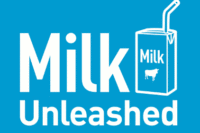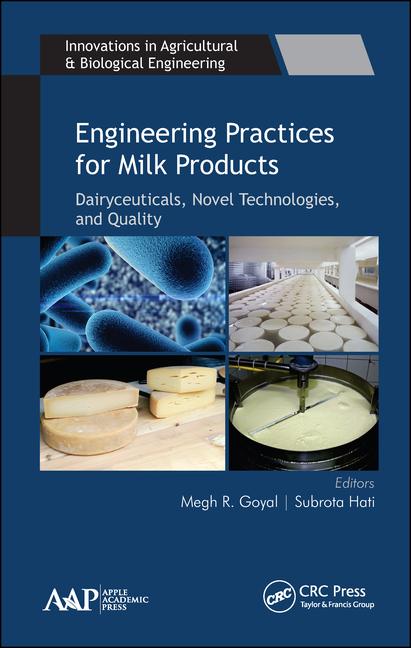Can technology save fluid milk?
A new campaign to educate moms about the benefits of milk processed at ultra-high temperatures and packed in aseptic cartons aims to shift consumption away from sodas and sports drinks to nutritious milk.


|
Everyone knows the woes of milk consumption. It has been in a steady decline for years. Once a person exits the ‘tween years and enters the teens, milk is about as relevant as a subscription to Tiger Beat magazine. Heavy drinkers of the stuff are ages two through four; 90% of this age group consumes milk, compared to 61% for those ages 50 and older.
The tykes drink 11 ounces of milk daily and consume another 3.5 ounces of milk in other foods and beverages, according to statistics by the Milk Processor Education Program. Moldy oldies like me (but not me) consume 6.2 ounces of milk daily. Personally, I’m good for a cup of fluid skim a day.
An obvious solution then, and one I’ve long advocated, is to make more two- to four-year-olds. If consumption is highest in this age group, we need more of them. So, we either produce the kids domestically (unlikely, given falling birth rates) or import them. Alas, no one seems to be embracing this tactic.
A more practical solution is to find reasons to drink milk after breakfast. The prime time for milk drinking is from 6 a.m. to 9 a.m. when a gallon jug holds sway on the breakfast table. The Big Brain marketing types are looking for what they call other “usage occasions.” MilkPEP hit on the idea of promoting chocolate milk as a recovery beverage. The Milk Processor Education Program is targeting active young adults with an ad campaign featuring elite athletes.
This month another party joins the battle to create more usage occasions, and it is targeting mothers of young children. Tetra Pak is counting on processing techniques and packaging to increase milk consumption. In August, Tetra Pak unveiled a campaign called Milk Unleashed. The web-based initiative aims to educate moms about shelf-stable milk in aseptic packages. Tetra Pak uses the term “shelf-safe milk” because that term makes more sense to moms than industry terms like “shelf-stable” and “extended shelf life,” Alonso Prado told me. He is the marketing manager for liquid dairy products and nutrition at Tetra Pak, Vernon Hills, Ill.
The idea, in essence, is that moms will buy quantities of ESL milk in single-serve cartons, refrigerate what they need for immediate use, and store the rest in their pantries. The gallon jug is fine for at-home use, but it is none-too-portable and it is definitely not user friendly when the user is on the go. Single-serve containers of milk, on the other hand, are the way to go. Milk is a perfect beverage for sweaty youngsters to drink after a soccer or volleyball game. Not only that, it is a healthier alternative to soft drinks and sports drinks.
Prado shared with me another opportunity that exists for processors who develop milk with specific benefits (such as low-fat, nonfat, lactose-free, fiber, cholesterol-lowering plant sterols, omega-3s or extra calcium). The idea, Prado said, is that the grocery shopper will buy various milks for the specific needs of each individual in a household. Instead of buying one gallon, the shopper might buy four quarts of four different milk products. No more “one size fits all.”
Tetra Pak is partnering with dairy processors and retailers to offer samples to consumers. MilkUnleashed.com lists brands and shows where to buy the milk. Read more about this initiative on our website.
Leave the cap on
At the International Dairy Foods Association’s sustainability symposium in Chicago, Mike Cappelli, the marketing manager for caps and closures at NOVA Chemicals Inc., talked about a recycling program called “Caps On.”
The goal is to have consumers screw the cap back on the carton before they toss it into the recycling bin. Here’s why: when the caps are loose, they fall off the conveyor at the recycling center and don’t get recycled. But if they are screwed back on the container, the polypropylene (or polyethylene) caps can be separated from the carton, and both can be recycled. The potential is huge. The Closure and Container Manufacturers Association says approximately 1.5 billion pounds of plastic closures on all sorts of containers (not just milk cartons) are produced every year. The CCMA and the Association of Postconsumer Plastic Recyclers are behind the effort. They are working with material recovery facilities, recycling haulers and communities to spread the word to leave the caps on.
Eco-minded dairy processors can print recycling instructions on their milk cartons and bottles. And if the information is simple enough for four-year-olds to follow, then they’ll become recyclers AND life-long milk drinkers (if the Tetra Pak campaign takes hold).
Jim Carper is chief editor of Dairy Foods.
Phone: 847-405-4009
Email: carperj@dairyfoods.com
Looking for a reprint of this article?
From high-res PDFs to custom plaques, order your copy today!









